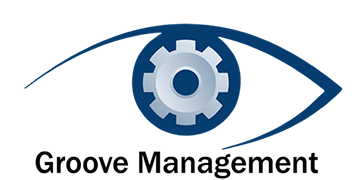What is your ROT (Return on Time)?
While getting my bachelors degree in business management with a concentration in organizational behavior, I took a few sociology classes. One of my professors, Dr. Michael Flaherty is an expert on the perception of time. His work and the concept of time as the great equalizer has stuck with me for the past thirty plus years.
Recently I was watching the Patrick Bet David podcast where Patrick was interviewing Miami Mayor and Presidential candidate Francis Suarez. Much of the interview was a typical political rant by Suarez, but towards the end of the interview he said something really interesting. He talked about his competing priorities and what he referred to has his ROT. He went on to say that ROT stand for return on time. This is his way of managing his priorities. The concept really resonates with me and for the past several weeks, I have been socializing the concept with my coaching clients.
Time is the great equalizer, because regardless of who you are, where you are, your race, religion, or socio-economic position, we all have the same sixty seconds in a minute, sixty minutes in an hour and 24 hours in a day. How we utilize that finite amount of time has a direct correlation to our individual success. Financial advisors will pontificate about the time value of money and the importance of time in the market versus timing the market. Those who begin investing at a younger age are likely to establish a larger nest egg through compound interest. Time can be an asset or a liability depending upon how you leverage it or allow it to slip away.
In my line of work as an execute coach and leadership consultant ROT is a great point of leverage for my clients. When starting an new coaching engagement one of the first homework assignments I give to all coachees is to have them complete a time pie. As ask them to take a pie chart and divide it into 24 hours. Next outline how many hours a day do they spend sleeping, how many hours eating, how many hours with family, how many hours exercising and the how many hours working.
Next I have the coachee sub-divide the work hours into time in meetings, one on ones, heads down work time, creativity time, etc. The engineers I work with usually come prepared with a detailed spreadsheet and the marketers stick to a pie chart.
The time chart activity is often very eye opening to clients. I ask what do you most and what do you do best. We have a good dialogue about how they are spending their time. This often leads to a discussion about behavior change. So many leaders spend too much time doing versus leading. Learning to let go of the task orientation is one of the hardest thing for successful people to do. Companies tend to promote the best doers into leadership roles, but the skills required to lead effectively are very different. Individual contributors can maximize their use of time by freeing themselves from distractions, but people leaders must utilize their time to remove distractions from their direct reports and to maximize the efficiency of their team members. In the example above the leader is spending 29% of their time in executive and staff meetings. What is the return on that investment of time? At Groove Management we help organization’s to improve meeting effectiveness and to reduce the amount of time client organizations waste in meetings. Check out our Leading Effective Meetings Workshop for more on the topic of meetings.
Being cognizant of how you are spending your time is the first step in improving your ROT. As an exercise, over the course of the next week keep a log of how you are spending your time. I am confident that you will be surprise how much of your time is wasted on activities that provide little value. Value is very subjective and each of us will calculate it differently. Time with friends and family might be of higher value to some while time doing outdoor activities that one loves might be more important to someone else. Remember, we all have the same twenty four hours in a day to spend. How you spend it will have a direct impact on what you are able to achieve.



